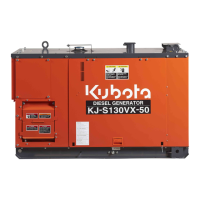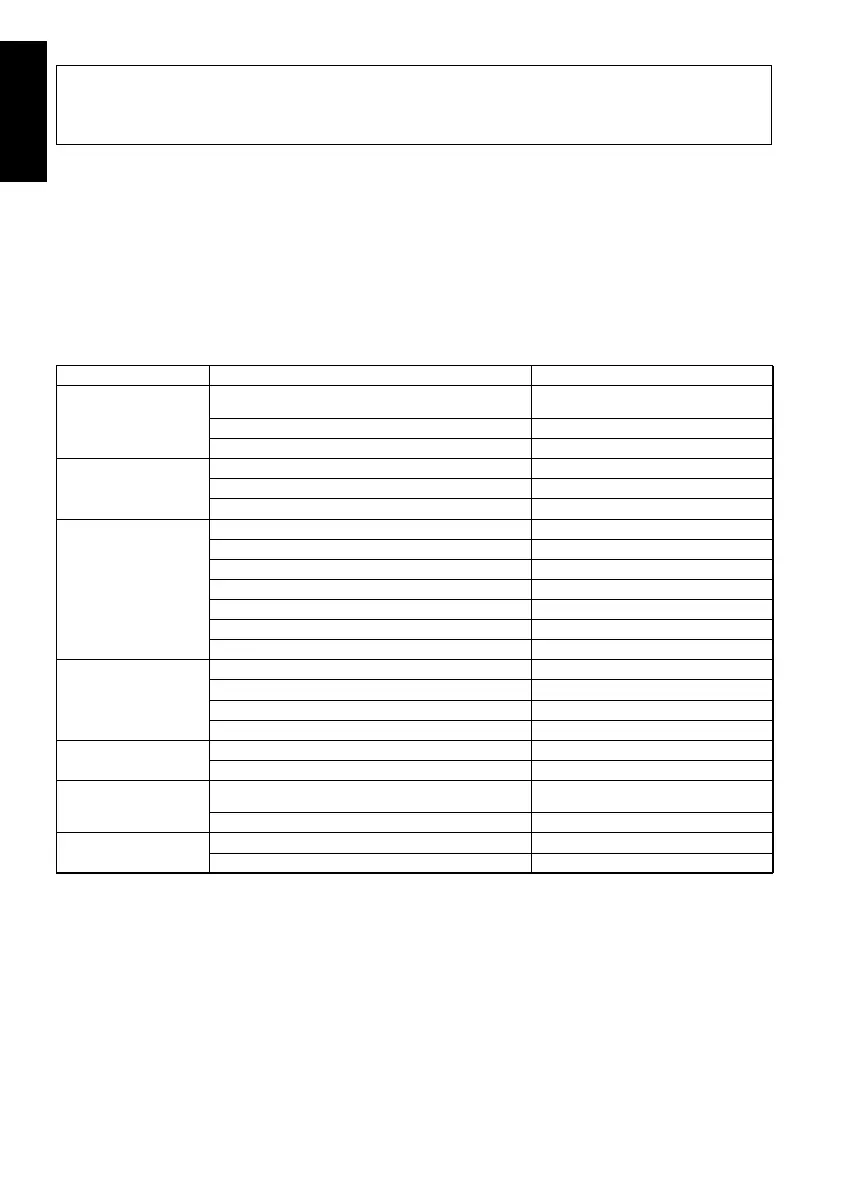36
ENGLISH
TROUBLESHOOTING
TROUBLESHOOTING
3
CAUTION:
To avoid personal injury:
¡ Always perform all checks with engine stopped and cool to the touch except for
those checks in which operation is required.
¡ DO NOT touch the charging section during operation.
¡ Avoid any contact with rotating fan during operation.
If the engine does not function properly, use the following chart to identify and correct the cause.
쎱 Generator Troubleshooting
Trouble Possible causes Correction
Unusual noise or
vibration
Single-phase load applied beyond allowable
level (on three phase models).
*Lower the load to acceptable level.
Bearing deteriorated. *Replace the bearing.
Coupling damaged. *Replace the coupling.
Frame overheated.
Cooling fan inlet or outlet blocked. *Unblock the inlet or outlet.
Voltage too high. *Readjust the voltage.
Overloaded. *Reduce the load.
Voltage failure to rise.
Voltage maladjusted. *Readjust using the voltage control.
AVR excitation output cable broken. *Repair the cable.
AVR itself in trouble. *Replace the AVR.
Exciter's winding short-circuited or broken. *Replace the generator.
AVR excitation input cable broken. *Repair the cable.
Generator's winding broken. *Replace the generator.
AVR excitation output fuse blown out. *Replace the fuse.
Voltage too high.
Voltage maladjusted. *Readjust using the voltage control.
AVR voltage detection cable broken. *Repair the cable.
AVR itself in trouble. *Replace the AVR.
Mercury arc lamp or such conductive load connected.
*Disconnect such load.
Voltage hunting
Pilot lamp failure to
light up
Inverter or such switching load connected. *Disconnect such load.
AVR itself in trouble. *Replace the AVR.
Circuit breaker turned
OFF.
Connected cable or load short-circuited.
*Contact a qualified electrical
engineer for inspection.
Overloaded.
Lamp bulb broken.
Generator voltage too low.
*Reduce the load.
*Replace the bulb.
*See "Voltage failure to rise" above.

